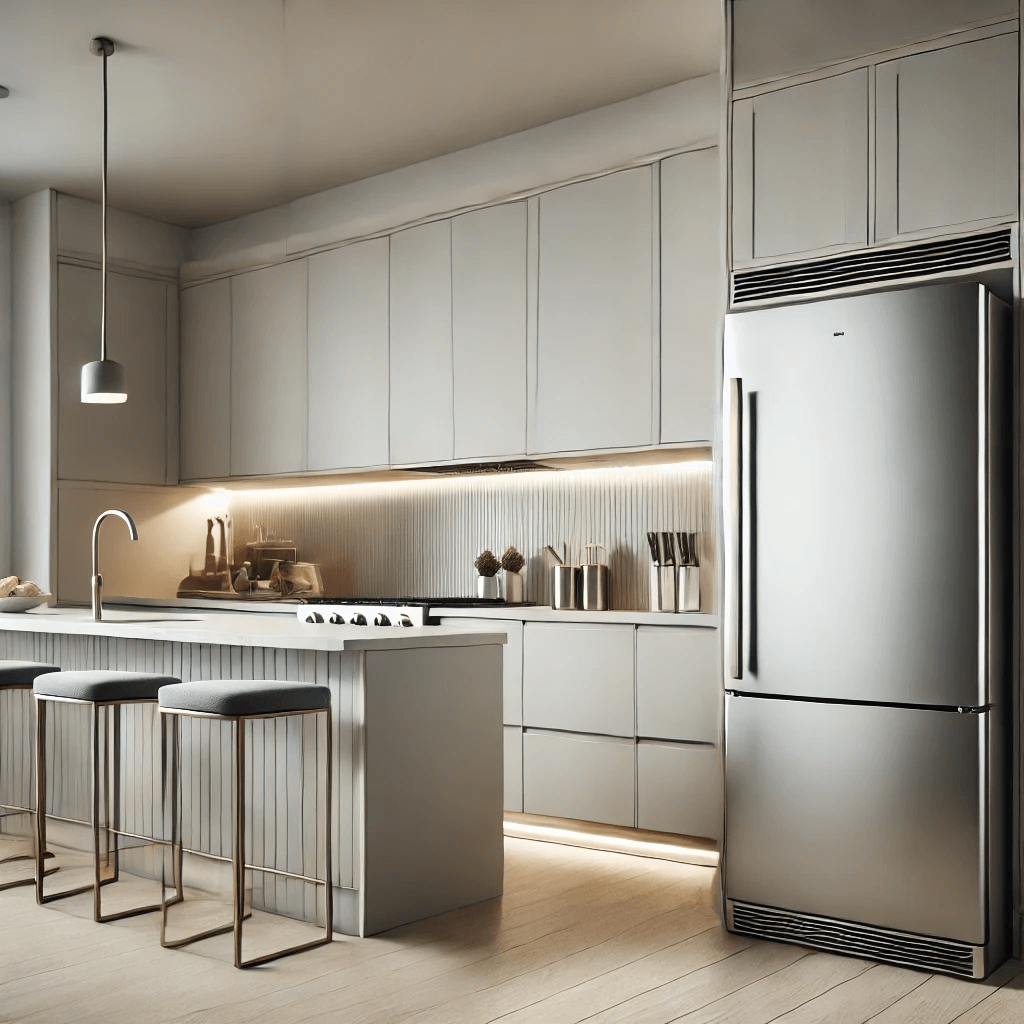When it comes to keeping fresh produce at its best, the temperature in your fridge plays a crucial role. Storing food at the optimal fridge temperature ensures your fruits and vegetables stay fresher for longer, reducing waste and helping you enjoy your meals at their peak taste and nutrition. But what is the best temperature to maintain, and how can you organize your fridge to maximize its efficiency?
Let’s break it down, so you can make the most of your produce and keep your fridge in top shape.
- Why Temperature is Important
- Storing Different Types of Produce
- The Role of Humidity Control
- Common Mistakes to Avoid
- Organizing Your Fridge for Maximum Freshness
- Simple Maintenance for Your Fridge
- Conclusion
Why Temperature is Important
Temperature impacts how quickly food spoils. Higher temperatures encourage bacterial growth, while overly cold temperatures can freeze and damage sensitive produce. The U.S. Food and Drug Administration (FDA) recommends keeping your fridge at or below 4°C. For fresh produce specifically, aiming for a range of 1.7°C to 3.3°C is ideal.
This range ensures two things:
- Bacterial Control: Bacteria thrive between 4°C and 60°C, known as the “danger zone.” Keeping your fridge below 4°C slows down bacterial growth and helps prevent foodborne illnesses.
- Preventing Freezing: Some fruits and vegetables are sensitive to freezing temperatures. Keeping your fridge just above 0°C avoids freezing your produce while keeping it fresh.
Storing Different Types of Produce
Not all fruits and vegetables need the same storage conditions. Some thrive in cold temperatures, while others prefer a warmer environment. Let’s explore the best storage practices for different types of produce.
1. Fruits
- Apples: Store apples in the crisper drawer at around 0°C to 1°C. Keep them separate from other produce, as they emit ethylene gas that can speed up the ripening process of nearby fruits and vegetables.
- Berries (strawberries, blueberries, raspberries): These fragile fruits do well around 2°C. Avoid rinsing them until you’re ready to eat, as moisture can encourage mold growth.
- Citrus fruits (oranges, lemons, limes): While they can be stored at room temperature for a few days, they’ll stay fresh longer in the fridge at 3°C.
- Bananas and Avocados: Both ripen best at room temperature. Once ripe, store them in the fridge at around 3°C to slow down the ripening process. Bananas may darken in color, but the fruit will remain fine.
2. Vegetables
- Leafy Greens (lettuce, spinach, kale): These should be stored at 2°C to 3°C in the crisper drawer. Wrap them in a paper towel to absorb excess moisture and keep them crisp.
- Carrots: Carrots prefer colder conditions, ideally between 0°C and 1°C. Store them in a plastic bag to prevent them from drying out.
- Tomatoes: Tomatoes lose their flavor when refrigerated. Keep them at room temperature and only put them in the fridge once fully ripe to extend their shelf life.
- Peppers (bell peppers, hot peppers): Store them in the fridge at around 3°C, but be mindful that they may lose some crunch if stored for too long.
3. Herbs
Most herbs (like parsley and cilantro) should be wrapped in a damp paper towel and stored in the fridge at 2°C to 3°C. Basil is an exception—it prefers room temperature and can be stored in a jar of water, like fresh flowers.

The Role of Humidity Control
Humidity levels in your fridge are just as important as temperature for keeping your produce fresh. Many modern fridges have adjustable humidity settings, particularly in the crisper drawers, which you can tweak depending on the produce you store.
- High humidity is ideal for vegetables like leafy greens, carrots, and broccoli. These items tend to lose moisture in dry conditions, so higher humidity keeps them crisp and fresh.
- Low humidity is better for fruits like apples and grapes, which can rot in overly damp environments. A lower humidity setting helps prevent mold and extends their shelf life.
Common Mistakes to Avoid
Storing fresh produce seems simple, but there are a few common mistakes that can lead to quicker spoilage:
- Overcrowding the fridge: A crowded fridge blocks airflow, causing uneven cooling. This can result in some items spoiling faster than others. Keep space around your items for air to circulate.
- Not adjusting the temperature: It’s easy to overlook the actual temperature of your fridge. Use a thermometer to make sure it’s consistently within the optimal range.
- Storing ethylene-sensitive produce together: Fruits like apples and bananas release ethylene gas, which can cause nearby vegetables to spoil faster. Keep ethylene-producing fruits separate from sensitive vegetables.
- Leaving produce uncovered: Exposing fresh produce to the open air in your fridge can cause it to dry out quickly. Use breathable bags or containers to retain moisture while still allowing airflow.
Organizing Your Fridge for Maximum Freshness
How you organize your fridge matters when it comes to keeping produce fresh. Here are some tips for optimizing storage:
- Crisper drawers: These drawers are designed for fruits and vegetables. Keep leafy greens and ethylene-sensitive veggies in one drawer and fruits that produce ethylene, like apples, in another.
- Middle shelves: Store dairy, pre-cut fruits, and leftovers here. This area typically maintains the most consistent temperature.
- Top shelves: These are slightly warmer than the lower shelves, so they’re good for items like condiments and other less perishable goods.
- Fridge door: The door is the warmest area of the fridge, making it unsuitable for fresh produce. Store beverages and condiments here instead.
Simple Maintenance for Your Fridge
To keep your fridge functioning at its best, regular maintenance is essential. Here’s how you can keep things running smoothly:
- Clean regularly: Wipe down shelves and drawers with a mild cleaning solution to prevent bacteria buildup and keep the space fresh.
- Check door seals: A tight seal is crucial for maintaining the correct fridge temperature. If the seal is damaged, replace it to ensure your fridge stays cold.
- Monitor temperature: Use a fridge thermometer to keep an eye on temperature fluctuations. If you notice any irregularities, it may be time for a maintenance check.
Conclusion
Maintaining the optimal fridge temperature between 2°C and 3°C will help keep your fresh produce in peak condition. By storing fruits and vegetables at the right temperature and humidity levels, and by organizing your fridge properly, you’ll reduce waste, save money, and enjoy your meals at their freshest. With these tips, your fridge can be your greatest tool for preserving the quality and flavor of your food.
For more maintenance and troubleshooting guides, read our blog.
You May Also Like
- How to Choose the Right Refrigerator Size for Your Home?
- Why Is My Washing Machine Not Draining Water?
- Why You Should Deep Clean Your Washer Dryer Once a Year?
- Inverter or Non-Inverter Air Conditioner: Which To Buy?
- What is the Right Air Conditioner Horsepower for Your Home?
- 5 Tips to Buy an Air Conditioner in Malaysia







